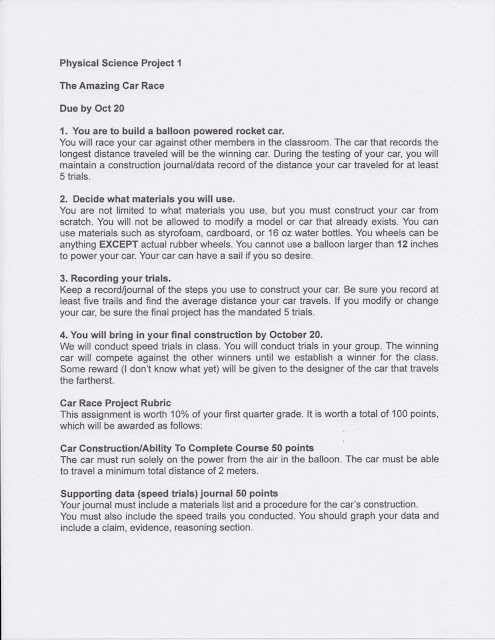ESSENTIAL QUESTION: How does a rocket ship get into orbit?
LEARNING TARGET: Analyze graphs of motion with numbers
BENCHMARKS: SC.912.P.12.2
LEARNING OBJECTIVES: Students will be able to:
-Calculate speed from position-time graphs.
-Calculate distance from speed-time graphs.
BELL RINGER: Continue Gizmo on Distance-Time
VOCABULARY: position, speed, vector, velocity, projectile, free fall, acceleration, slope
HOME LEARNING: notebook update
AGENDA
WHOLE GROUP
Students completed the Gizmo on Distance Time.
They also took the assessment at the end of the Gizmo.












